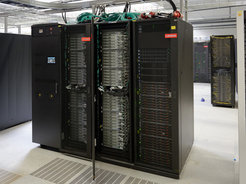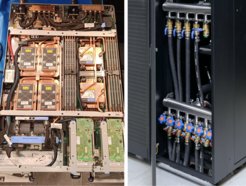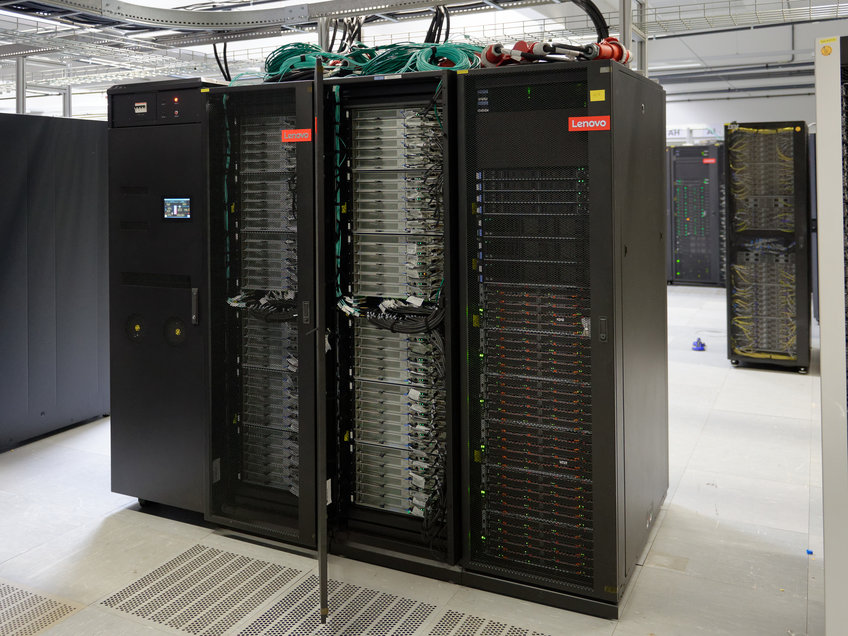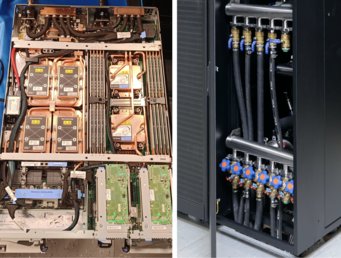Supercomputer Ada brings computational research up to top speed
A new supercomputer capable of handling highly data-intensive calculations for the MPSD and the Max Planck Institute for the Physics of Complex Systems (MPIPKS) has just been completed and gone online. Its enormous compute power allows scientists to run advanced simulations for their research or quickly analyse large amounts of experimental data.
The Lenovo machine has been named ‘Ada’ in honour of Ada Lovelace, the English mathematician widely regarded as the first computer programmer. In the early 19th century, she became the first person to recognize that computers – which were mere mechanical calculators during her lifetime – have applications beyond pure calculation.

Much of today’s research is based on increasingly large data volumes, which pushes even high-powered conventional computers to their limits. To tackle this, research institutions invest in dedicated High Performance Computing facilities and use them jointly for their scientific work, as in the case of the MPSD and the MPIPKS.
Ada consists of 72 powerful server nodes connected by a fast network. Each of these water-cooled computer nodes has two Central Processing Units (CPUs) with 36 cores each and 1024 GB of RAM. In addition, every server node hosts 4 NVIDIA Graphics Processing Units, or GPUs (A100-80 GB). Together, the two CPUs and four GPUs of one node provide a computing power of 40 TeraFlop/s – that is 40 trillion floating point operations per second. The entire supercomputer is about 30,000 times faster than a standard Desktop PC featuring an Intel-i7 CPU with eight cores.
Computations which would previously have taken two to three weeks can now be carried out within a single day. For researchers, this means that they can run a series of virtual experiments and successively improve them on far shorter time spans. Moreover, Ada’s processing power opens up new research possibilities because scientists can now carry out calculations that would simply have taken too long in the past. Examples include resolving long-standing debates regarding the existence of exotic phases of matter, and providing essential numerical benchmarks to advance experimental progress in quantum simulation.

Moving the scientific computations from CPUs to GPUs also reduces the energy consumption for calculations. However, this does require significant software engineering work to enable the simulation tools to run efficiently on GPUs. These efforts began years ago as a collaboration between the MPSD and the Max Planck Computing and Data Facility (MPCDF), whose team hosts and operates Ada. Taking the Octopus simulation software as an example – which can simulate matter based on the Schrödinger equation – this reduces the energy consumption of a given simulation by a factor of 3.
The Ada supercomputer represents a €4 million investment and promises significant research advances through, for example, simulations of fundamental physical and chemical processes such as light-matter interactions, the deeper understanding of exotic quantum mechanical states of matter, the simulation of out-of-equilibrium quantum dynamics, and the processing of crystallography data for nanoscale imaging. Ada will also facilitate the application of machine learning techniques in these and related fields of physics: for instance, the development of reinforcement learning algorithms to control quantum matter and the use of deep neural networks in material science, condensed matter physics, and quantum chemistry. The computer is equipped with 5,000 terabytes of storage to hold scientific data.
Based on the global list of the 500 most powerful High Performance computing machines, Ada is comparable to the 144th fastest computer on the planet. The research enabled through Ada will contribute to advancements in a broad spectrum of fields, ranging from fundamental science to material science and health.













